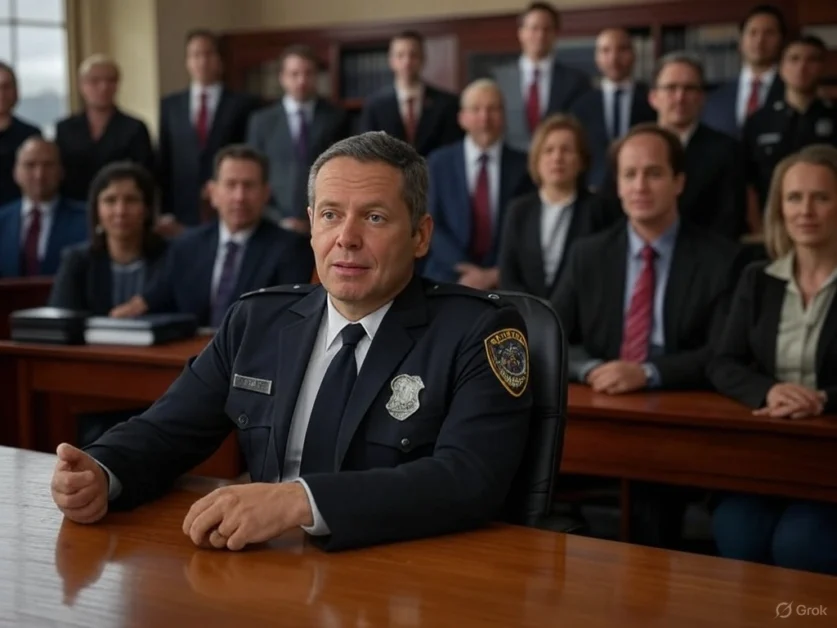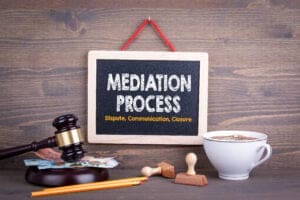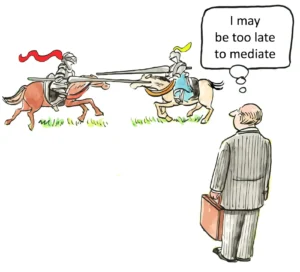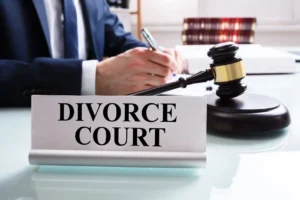Miranda Rights Explained: What Police Must Tell You (Free Legal Guide)
In the landscape of American criminal justice, few legal protections are as widely recognized as Miranda rights. These fundamental safeguards serve as a critical shield against self-incrimination during police interrogations. The requirement that law enforcement officers inform suspects of these rights before custodial questioning represents a cornerstone of constitutional protection, balancing the power of the state against the liberty of the individual. The Miranda warning stems from the landmark 1966 Supreme Court decision in Miranda v. Arizona, which established that statements made by defendants during police interrogation would be inadmissible in court unless they were first informed of their constitutional rights.
The Court’s decision in Miranda fundamentally altered the landscape of criminal procedure in the United States, creating a clear set of rules that law enforcement must follow when conducting interrogations. These protections are deeply rooted in the Fifth Amendment’s guarantee against self-incrimination and the Sixth Amendment’s right to counsel. Despite being firmly established in American jurisprudence for over half a century, Miranda rights continue to evolve through subsequent court decisions and remain a subject of ongoing legal debate.
The Origins and Constitutional Basis of Miranda Rights
The Miranda doctrine emerged from a series of cases that culminated in the Supreme Court’s 1966 decision. Ernesto Miranda, arrested for kidnapping and rape in Phoenix, Arizona, was interrogated for two hours without being informed of his right to an attorney or his right to remain silent. He subsequently signed a confession that included a typed statement acknowledging he was aware of his legal rights. The Supreme Court overturned his conviction, finding that Miranda had not been properly informed of his constitutional protections.
The Court’s decision was grounded in the Fifth Amendment’s protection against self-incrimination, which states that no person “shall be compelled in any criminal case to be a witness against himself.” This constitutional guarantee had long been recognized in courtroom proceedings, but Miranda extended this protection to police interrogations, acknowledging the inherently coercive nature of custodial questioning.
Chief Justice Earl Warren, writing for the majority, recognized that modern interrogation practices often employed psychological tactics designed to subjugate the individual’s will to that of the examiner. The Court determined that procedural safeguards were necessary to protect the privilege against self-incrimination during custodial interrogations. These safeguards became known as the Miranda warnings.
The decision also drew upon the Sixth Amendment’s guarantee of the right to counsel. The Court recognized that the presence of an attorney during interrogation would help ensure that statements made by the accused were truly voluntary and would provide protection for those unable to fully understand their rights due to intimidation, exhaustion, or limited education.
The Four Essential Miranda Warnings
The Miranda warning consists of four essential components that law enforcement officers must communicate to suspects before custodial interrogation:
- Right to remain silent: Suspects must be informed that they have the right to remain silent during questioning. This warning directly addresses the Fifth Amendment protection against self-incrimination by making clear that individuals are not required to answer questions posed by law enforcement.
- Statements can be used as evidence: Officers must warn suspects that anything they say can and will be used against them in a court of law. This warning ensures that individuals understand the potential consequences of waiving their right to remain silent.
- Right to an attorney: Suspects must be informed of their right to consult with an attorney before and during questioning. This warning implements the Sixth Amendment right to counsel in the context of police interrogation.
- Right to appointed counsel: If a suspect cannot afford an attorney, they must be informed that one will be appointed for them prior to any questioning. This warning ensures that the right to counsel is not limited to those with financial means.
These warnings are not merely procedural formalities but substantive protections designed to ensure that individuals make informed decisions about whether to speak to law enforcement. The Supreme Court recognized that without explicit warnings, many individuals might not be aware of their constitutional rights or might feel compelled to answer questions despite these protections.
When Miranda Warnings Are Required
The obligation to provide Miranda warnings is triggered by two key elements: custody and interrogation. Both must be present for the Miranda requirements to apply.
Custody refers to circumstances where a reasonable person would not feel free to leave or terminate the encounter with law enforcement. Courts consider various factors in determining whether an individual is in custody, including the location of questioning, the duration of the encounter, the presence of physical restraints, the number of officers present, and the use of weapons or force.
Formal arrest clearly constitutes custody, but custody can also exist in situations short of formal arrest. For example, if police officers transport a suspect to a police station for questioning, detain someone in a small room for an extended period, or otherwise create circumstances where a reasonable person would not feel free to leave, Miranda warnings may be required even without a formal arrest.
Interrogation encompasses express questioning by law enforcement officers and any words or actions that officers should know are reasonably likely to elicit an incriminating response. This includes not only direct questions about criminal activity but also psychological ploys designed to elicit confessions.
It is important to note that not all interactions with police require Miranda warnings. Routine traffic stops, street encounters, and general on-scene questioning about the facts of a crime do not typically constitute custodial interrogation and therefore do not trigger Miranda requirements. Similarly, volunteered statements not made in response to police questioning fall outside the scope of Miranda.
The Public Safety Exception to Miranda
While Miranda established a clear rule requiring warnings before custodial interrogation, the Supreme Court has recognized certain exceptions to this requirement. The most significant is the public safety exception, established in the 1984 case of New York v. Quarles.
In Quarles, police officers apprehended a suspect in a supermarket who was believed to be armed. Without providing Miranda warnings, an officer asked the suspect where the gun was located. The suspect indicated where he had hidden the weapon, and it was recovered by police. The Supreme Court held that the statement and the gun were admissible as evidence despite the lack of Miranda warnings because the officer’s question was motivated by a concern for public safety rather than a desire to obtain incriminating evidence.
The public safety exception allows officers to temporarily forgo Miranda warnings when there is an immediate threat to public safety that necessitates urgent questioning. This exception recognizes that in emergency situations, the need to protect the public may outweigh the procedural safeguards established by Miranda.
Courts have applied the public safety exception in various contexts, including situations involving suspected bombs, weapons, or other dangerous items that pose an immediate threat. However, the exception is narrowly construed and applies only to questions necessary to address the immediate danger. Once the emergency has been addressed, officers must provide Miranda warnings before continuing with investigative questioning.
Waiving Miranda Rights
Suspects may choose to waive their Miranda rights and speak to law enforcement without an attorney present. However, for such a waiver to be valid, it must be made voluntarily, knowingly, and intelligently.
A voluntary waiver means that the decision to speak was not the product of coercion, threats, or improper influence by law enforcement. Courts examine the totality of circumstances surrounding the waiver, including the suspect’s age, education, intelligence, and the conditions of the interrogation, to determine whether it was truly voluntary.
A knowing and intelligent waiver requires that the suspect understood the rights being abandoned and the consequences of doing so. This does not mean that suspects must fully comprehend all possible ramifications of their decision, but they must have a basic understanding of their rights and what it means to give them up.
Waivers can be either express or implied. An express waiver occurs when a suspect explicitly states that they understand their rights and are willing to answer questions without an attorney. An implied waiver may be found when a suspect acknowledges understanding their rights and then proceeds to answer questions without explicitly stating that they are waiving their rights.
Law enforcement officers are not required to obtain a written waiver, although written waivers can provide strong evidence that a suspect voluntarily relinquished their rights. In practice, many departments use standardized forms to document Miranda warnings and waivers to help establish that proper procedures were followed.
Invoking Miranda Rights
Suspects may invoke their Miranda rights at any time during questioning, even if they initially waived those rights. When a suspect clearly invokes either the right to remain silent or the right to counsel, law enforcement must honor that invocation by ceasing questioning.
The standard for invoking the right to remain silent and the right to counsel differs slightly. To invoke the right to remain silent, a suspect must unambiguously indicate a desire to remain silent or to terminate the interview. If a suspect makes an ambiguous statement that might be construed as invoking this right, officers are not required to stop questioning or to seek clarification.
The invocation of the right to counsel requires a clear and unequivocal request for an attorney. Statements like “Maybe I should talk to a lawyer” or “Do you think I need an attorney?” may be considered ambiguous and may not require officers to cease questioning. However, statements like “I want a lawyer” or “I need to speak with an attorney” constitute clear invocations that must be respected.
Once a suspect has invoked the right to counsel, police may not initiate further questioning until an attorney has been provided or the suspect themselves initiates further communication with law enforcement. This rule, established in Edwards v. Arizona, provides robust protection for suspects who request legal representation.
Consequences of Miranda Violations
When law enforcement fails to provide proper Miranda warnings before custodial interrogation, statements obtained in violation of Miranda are generally inadmissible in the prosecution’s case-in-chief. This exclusionary rule serves as a deterrent against improper police conduct and protects the constitutional rights of defendants.
However, the consequences of Miranda violations are not as severe as those for some other constitutional violations. Statements obtained in violation of Miranda may still be used for certain limited purposes, such as impeachment. This means that if a defendant takes the stand and testifies in a manner inconsistent with statements made during an un-Mirandized interrogation, those statements may be introduced to challenge the defendant’s credibility.
Additionally, physical evidence discovered as a result of statements obtained in violation of Miranda may still be admissible under certain circumstances. The Supreme Court has held that the “fruit of the poisonous tree” doctrine, which generally excludes evidence derived from constitutional violations, applies more narrowly in the Miranda context than in the context of Fourth Amendment violations.
It is important to note that Miranda violations do not automatically result in the dismissal of charges. The remedy for a Miranda violation is the exclusion of the improperly obtained statements, not dismissal of the case. Prosecutors may still proceed with charges based on other admissible evidence.
The 2022 Supreme Court Decision in Vega v. Tekoh
In June 2022, the Supreme Court issued a significant decision in Vega v. Tekoh that limited the remedies available for Miranda violations. The case involved a hospital worker, Terence Tekoh, who was questioned by Los Angeles County Sheriff’s Deputy Carlos Vega about an alleged sexual assault. Vega did not provide Miranda warnings before questioning Tekoh, who subsequently signed a confession. Tekoh was acquitted at trial despite the confession being admitted into evidence.
Following his acquittal, Tekoh filed a civil lawsuit against Vega under 42 U.S.C. § 1983, which allows individuals to sue government officials for violations of constitutional rights. Tekoh argued that Vega’s failure to provide Miranda warnings violated his Fifth Amendment rights and entitled him to damages.
In a 6-3 decision, the Supreme Court ruled that a violation of the Miranda rules does not provide a basis for a claim under § 1983. Writing for the majority, Justice Samuel Alito characterized the Miranda warnings as prophylactic rules designed to protect the Fifth Amendment right against self-incrimination, rather than constitutional rights in themselves. The Court held that while statements obtained in violation of Miranda can be excluded from criminal trials, the failure to provide Miranda warnings does not constitute a violation of the Fifth Amendment that can support a claim for damages.
This decision represents a significant limitation on the remedies available for Miranda violations. While the exclusionary rule remains intact, individuals who are not properly advised of their Miranda rights cannot seek monetary damages from law enforcement officers under § 1983, even if improperly obtained statements are used against them at trial.
The dissenting justices, led by Justice Elena Kagan, argued that the majority’s decision undermined the constitutional basis of Miranda and weakened its protections. The dissent contended that Miranda established a constitutional rule, not merely a prophylactic one, and that violations of this rule should be actionable under § 1983.
Common Misconceptions About Miranda Rights
Despite the prominence of Miranda warnings in American popular culture, several misconceptions persist about when and how these rights apply:
- Police must always read Miranda rights upon arrest: Contrary to popular belief, Miranda warnings are not required at the time of arrest but only before custodial interrogation. If a person is arrested but not questioned, Miranda warnings are not necessary.
- Failure to read Miranda rights invalidates an arrest: A failure to provide Miranda warnings does not affect the legality of an arrest or require charges to be dismissed. It only affects the admissibility of statements made during custodial interrogation.
- Miranda applies to all police interactions: Miranda only applies to custodial interrogations. Routine traffic stops, voluntary interviews, and general on-scene questioning typically do not require Miranda warnings.
- Physical evidence is always excluded if Miranda is violated: While statements obtained in violation of Miranda are generally inadmissible, physical evidence discovered as a result of those statements may still be admissible under certain circumstances.
- Miranda protects against all self-incriminating statements: Miranda only protects against statements made during custodial interrogation. Spontaneous or volunteered statements, even if incriminating, are not protected by Miranda if they are not made in response to police questioning.
Understanding these distinctions is crucial for both law enforcement officers and individuals who may interact with the criminal justice system. Miranda provides important but specific protections that apply in particular contexts, not a blanket shield against all self-incrimination.
Miranda Rights for Special Populations
The application of Miranda rights can be particularly complex when dealing with certain populations, including juveniles, non-English speakers, and individuals with mental disabilities.
For juveniles, the Supreme Court has recognized that age must be considered when determining whether a person is in custody for Miranda purposes. In J.D.B. v. North Carolina, the Court held that a child’s age is relevant to the custody analysis because children are generally more susceptible to pressure from authority figures than adults. Courts must consider how a reasonable child in the suspect’s position would perceive their freedom to leave.
Additionally, some states have enacted special protections for juvenile suspects, such as requiring the presence of a parent or guardian during questioning or mandating that Miranda warnings be given in age-appropriate language. These additional safeguards recognize the unique vulnerabilities of young people in the criminal justice system.
For non-English speakers, Miranda warnings must be provided in a language the suspect can understand. Law enforcement agencies typically have access to translated Miranda warning cards or interpreters to ensure that non-English speakers are properly informed of their rights. Failure to provide comprehensible warnings to a non-English speaker may render any subsequent statements inadmissible.
Individuals with mental disabilities present particular challenges for the Miranda doctrine. The Supreme Court has held that Miranda waivers must be knowing and intelligent, which requires that the suspect understand the rights being waived. For individuals with significant cognitive impairments, this standard may be difficult to meet. Courts evaluate the totality of circumstances, including the suspect’s mental capacity, the complexity of the warnings provided, and any accommodations made by law enforcement, to determine whether a valid waiver occurred.
The Future of Miranda Rights
As we look to the future, several factors may influence the evolution of Miranda rights in American jurisprudence:
Technological advancements continue to change how police interactions are documented. Body cameras, interrogation recording systems, and other technologies provide more complete records of police-citizen encounters, potentially reducing disputes about whether proper warnings were given or rights were validly waived. These technologies may also influence police behavior by creating accountability for adherence to Miranda requirements.
Changing court composition may affect the interpretation and application of Miranda. The Supreme Court’s decision in Vega v. Tekoh suggests a willingness by the current Court to limit Miranda’s reach in certain contexts. Future cases may further define the boundaries of Miranda protections and the remedies available for violations.
Legislative initiatives at both the federal and state levels may supplement or modify Miranda requirements. Some states have already enacted laws providing greater protections than those required by Miranda, such as mandatory recording of interrogations or additional safeguards for vulnerable populations. These state-level innovations may influence national standards over time.
Public opinion and police practices also play a role in shaping Miranda’s future. Public expectations regarding police transparency and accountability may drive changes in law enforcement policies and training related to interrogations and Miranda compliance. Police departments increasingly recognize that proper adherence to Miranda not only protects suspects’ rights but also enhances the reliability and admissibility of confessions.
Practical Advice for Individuals
Understanding your Miranda rights is essential for protecting your interests during interactions with law enforcement. If you find yourself in a situation where Miranda rights are relevant, consider the following guidance:
- Listen carefully to the warnings: Pay close attention to the Miranda warnings if they are provided. Make sure you understand each component before responding to questions.
- Exercise your right to remain silent: You can invoke your right to remain silent at any time, even if you initially agreed to speak with officers. Simply state clearly that you wish to remain silent or that you do not want to answer any more questions.
- Request an attorney: If you are unsure about how to proceed, request an attorney before answering questions. Once you clearly ask for an attorney, police must cease questioning until your attorney is present.
- Be clear and unambiguous: When invoking your rights, use clear and unambiguous language. Statements like “I want a lawyer” or “I am exercising my right to remain silent” leave no room for interpretation.
- Understand that anything you say can be used against you: Even seemingly innocent statements can be used to build a case against you. Exercise caution in all communications with law enforcement.
- Know that Miranda only applies to custodial interrogation: Be aware that statements made in non-custodial settings or volunteered without questioning may be admissible even without Miranda warnings.
- Seek legal advice: If you believe your Miranda rights have been violated, consult with an attorney as soon as possible to understand your options and potential remedies.
The Broader Significance of Miranda
Beyond its specific legal requirements, Miranda represents a fundamental balancing of power between the state and the individual in the criminal justice system. By requiring law enforcement to explicitly inform suspects of their constitutional rights, Miranda acknowledges the inherent pressure of custodial interrogation and attempts to level the playing field.
Miranda also embodies the principle that constitutional rights are meaningful only if individuals are aware of them and can effectively exercise them. The decision recognizes that many people, particularly those with limited education or resources, may not be fully aware of their constitutional protections without explicit notification.
Furthermore, Miranda reflects a commitment to ensuring that confessions are voluntary and reliable. By requiring warnings and establishing procedural safeguards, the doctrine aims to reduce the risk of false confessions obtained through coercion or manipulation.
Critics of Miranda have argued that the warnings hamper law enforcement’s ability to solve crimes by discouraging confessions. However, empirical studies have generally found that Miranda has not significantly reduced confession rates or hampered criminal investigations. Law enforcement agencies have adapted to the requirements, and many suspects still waive their rights and speak to police despite being warned of the potential consequences.
Miranda Rights in the Context of Modern Policing
The application of Miranda rights must be understood within the broader context of modern policing practices and criminal justice reform efforts.
Community policing initiatives emphasize building trust between law enforcement and the communities they serve. Proper adherence to Miranda requirements can contribute to this trust by demonstrating respect for constitutional rights and procedural fairness. Conversely, perceived violations of Miranda can undermine community confidence in law enforcement.
Criminal justice reform movements often focus on addressing systemic inequities in how different communities experience policing. Miranda provides a standardized set of protections that apply regardless of a suspect’s background, though research suggests that factors such as race, education, and socioeconomic status may influence how individuals understand and exercise these rights.
Police training increasingly emphasizes constitutional compliance and de-escalation techniques. Comprehensive training on Miranda requirements helps officers navigate the complexities of when warnings are required and how to properly document compliance. This training benefits both suspects, whose rights are protected, and officers, whose properly obtained evidence is more likely to be admissible in court.
Interrogation techniques have evolved significantly since Miranda was decided. Modern approaches often focus on building rapport and gathering information rather than obtaining confessions through psychological pressure. These techniques can be effective while still respecting suspects’ Miranda rights.
Conclusion
Miranda rights remain a cornerstone of American criminal procedure, providing essential protections against self-incrimination during police interrogations. While the doctrine has evolved through subsequent court decisions and will likely continue to adapt to changing circumstances, its core principles endure: individuals in custody must be informed of their constitutional rights before interrogation, and statements obtained without proper warnings may be excluded from evidence.
The Supreme Court’s recent decision in Vega v. Tekoh has limited the remedies available for Miranda violations, but it has not undermined the fundamental requirement that warnings be provided before custodial interrogation. The exclusionary rule continues to serve as the primary enforcement mechanism for Miranda compliance.
As technology, policing practices, and legal standards evolve, Miranda will likely remain a subject of ongoing debate and refinement. However, its central purpose—ensuring that individuals are aware of their constitutional rights when facing the coercive power of the state—remains as relevant today as it was when the doctrine was established more than half a century ago.
For individuals navigating the criminal justice system, understanding Miranda rights is essential for making informed decisions during interactions with law enforcement. For society as a whole, Miranda represents an important affirmation that even in the pursuit of public safety, constitutional protections must be respected and preserved.
The enduring significance of Miranda lies not only in its specific legal requirements but also in its symbolic importance as a constitutional safeguard that balances power between the state and individual citizens. As a cornerstone of American criminal procedure, Miranda represents our justice system’s commitment to protecting fundamental rights even when pursuing public safety. The warnings serve as a practical reminder that in a democratic society, law enforcement authority must be exercised with respect for individual dignity and constitutional protections.
Despite challenges and limitations imposed by recent Supreme Court decisions like Vega v. Tekoh, which limited civil remedies for Miranda violations, the core requirement that police inform suspects of their rights before custodial interrogation remains intact. The warnings continue to serve their essential function of ensuring that confessions are voluntary and that individuals understand their constitutional protections before waiving them.
As we look toward the future, Miranda’s principles will likely continue to evolve alongside changes in policing practices, technology, and societal expectations. What remains constant, however, is the recognition that meaningful constitutional rights require both awareness and the practical ability to exercise them—a principle that Miranda embodies and that continues to resonate throughout our criminal justice system.
Citations:
- https://www.aclu.org/documents/miranda-rule
- https://www.findlaw.com/criminal/criminal-rights/miranda-rights-and-the-fifth-amendment.html
- https://www.wordtune.com/blog/increase-essay-word-count
- https://www.aclu.org/news/civil-liberties/supreme-court-rejects-promise-miranda-rights
- https://www.rightslitigation.com/2022/07/25/how-did-my-miranda-rights-change/
- https://pro.bloomberglaw.com/insights/business-of-law/legal-trends/
- https://scholarship.law.tamu.edu/cgi/viewcontent.cgi?article=1325&context=facscholar
- https://www.mvsllp.com/blog/2024/july/understanding-your-miranda-rights-what-you-need-/
- https://law.rutgers.edu/LegalIssuestoWatch2025
- https://www.hulnicklaw.com/blog/2022/august/are-police-still-required-to-read-miranda-rights/
- https://www.vindicatelaw.com/blog/what-changes-did-the-supreme-court-make-to-your-miranda-rights/
- https://essaypro.com/blog/how-to-write-a-3000-word-essay
- https://guides.loc.gov/latinx-civil-rights/miranda-v-arizona
- http://www.mirandawarning.org/whatareyourmirandarights.html
- https://elnacain.com/blog/writing-process-3000-words/
- https://www.nolo.com/legal-encyclopedia/statements-obtained-police-violate-miranda.html
- https://www.hmichaelsteinberg.com/articles/the-colorado-criminal-justice-system-what-are-my-rights/understanding-the-miranda-rule/
- https://www.sfbar.org/blog/broaden-and-deepen-your-repertoire-of-transitions/
- https://www.lawforseniors.org/lifelong-legal-learning/why-the-miranda-decision-still-matters-years-later
- https://www.uscourts.gov/about-federal-courts/educational-resources/educational-activities/fifth-amendment-activities/miranda-v-arizona/facts-and-case-summary-miranda-v-arizona
- https://www.spellbook.legal/blog/12-word-add-ins-that-give-you-legal-drafting-superpowers
- https://www2.stetson.edu/law-review/article/quarrelling-about-public-safety-how-a-reverse-miranda-warning-would-protect-the-public-and-the-constitution/
- https://www.britannica.com/topic/Miranda-warning
- https://www.litera.com/blog/legal-trends
- https://gableslawfirm.com/2024/12/legal-trends-for-the-usa-in-2025-a-review-of-the-legal-landscape/
- https://www.legaldefense.com/legal-blogs/2024/july/what-happens-when-miranda-rights-arent-read-/
- https://supreme.justia.com/cases-by-topic/miranda-rights/
- https://www.legaldive.com/news/6-in-house-legal-trends-to-watch-in-2025/736788/
- https://libguides.ctstatelibrary.org/c.php?g=1393925&p=10616803
- https://www.craiggreeninglaw.com/blog/miranda-rights/
- https://www.fastcompany.com/91253079/10-hot-button-issues-new-u-s-laws-2025
- https://www.nytimes.com/topic/subject/miranda-warnings
- https://www.justia.com/criminal/procedure/miranda-rights/waiver-of-miranda-rights/
- https://www.lawinfo.com/resources/civil-rights/miranda-rights/
- https://www.reynolds.edu/writing-studio/writing-resources/ways-to-expand-an-essay.html
- https://www.fletc.gov/sites/default/files/imported_files/training/programs/legal-division/downloads-articles-and-faqs/research-by-subject/5th-amendment/newestconstitutionalright.pdf














![Life Insurance – The Ultimate Estate Planning Tool [Video] - Attorneys.Media - Legal Expert Interviews & Trusted Advice Watch: Life Insurance – the Ultimate Estate Planning Tool with Andrew Dósa – Tacoma & Oakland](https://b3514829.smushcdn.com/3514829/wp-content/uploads/2025/09/life-insurance-form-SBI-300194206-300x200.jpg?lossy=2&strip=1&webp=1)





